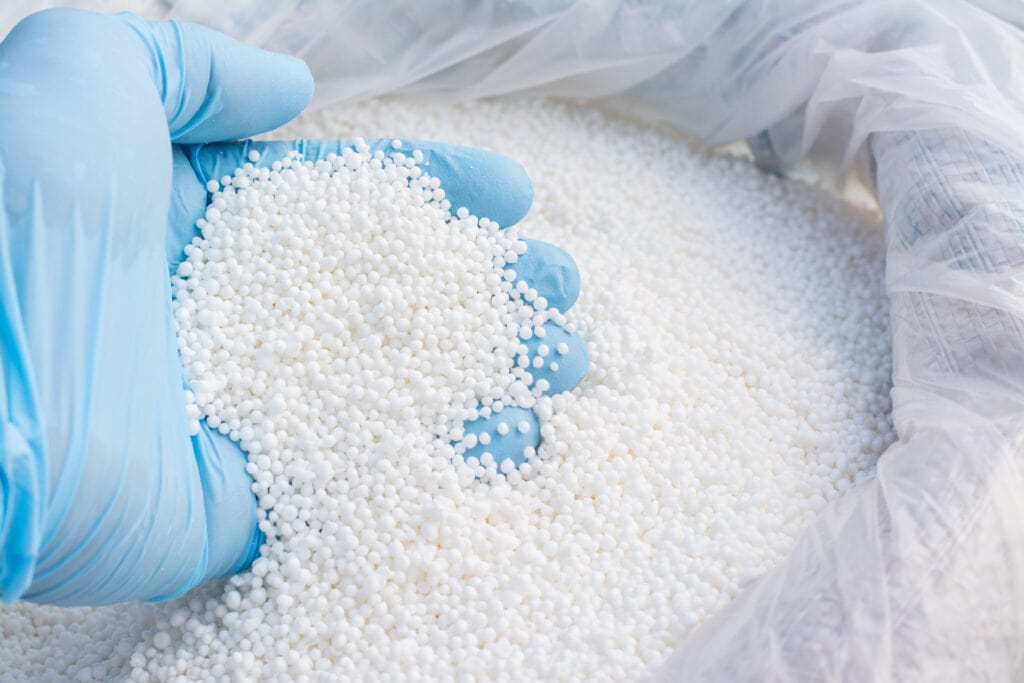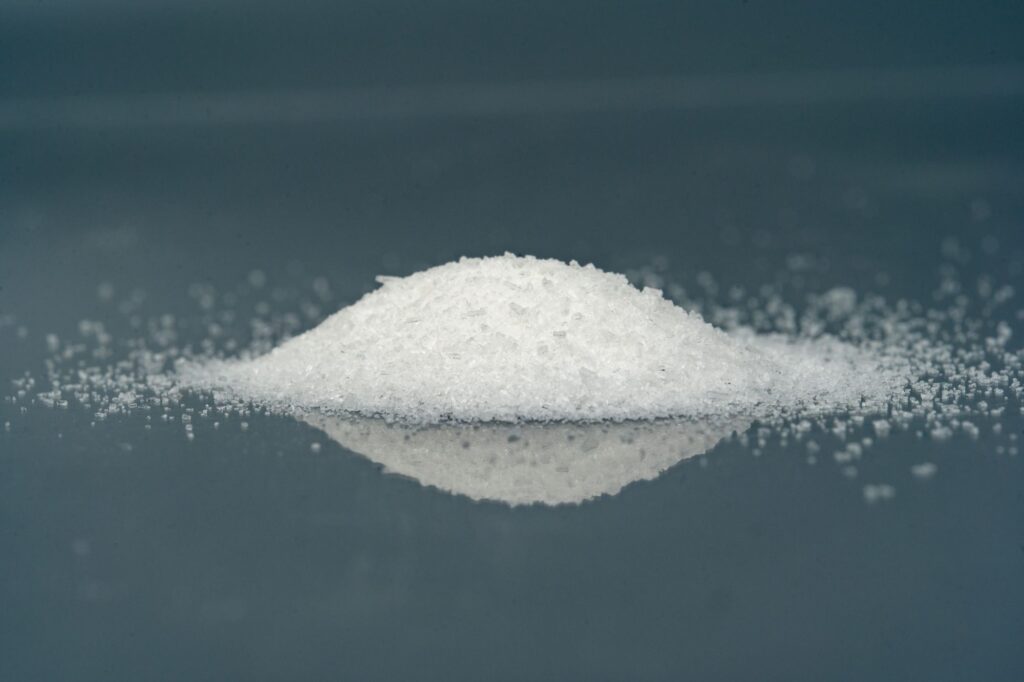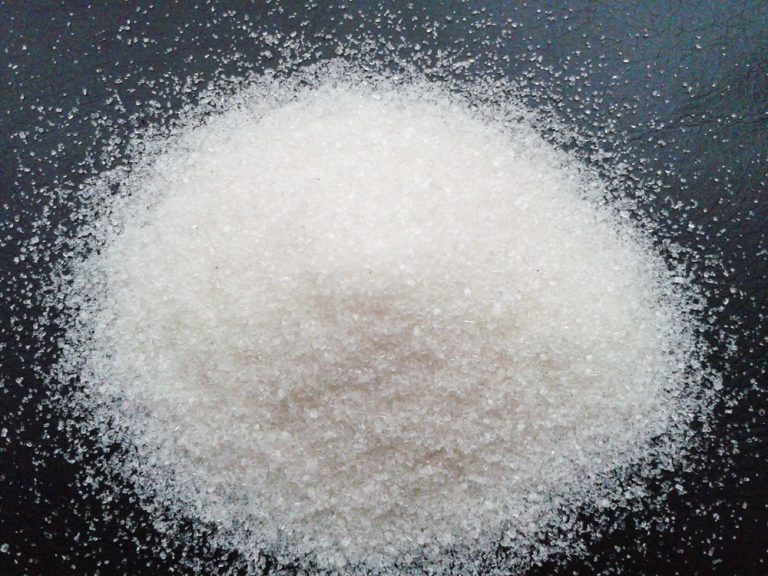Fertilizers are a cornerstone of modern agriculture. As a senior agricultural engineer, I’ve witnessed firsthand how the right fertilizer strategy can dramatically enhance soil fertility, increase crop yield, and boost overall farm productivity. These benefits are directly tied to the chemical composition of fertilizers. Each chemical plays a unique role in plant development, nutrient uptake, and soil health.
Here, the most widely used fertilizer chemicals are outlined, outlining their application, benefit, and appropriate agricultural use. Whether one is in business with wide-acre crops or intensive horticultural schemes, it is imperative to understand the chemicals outlined below in making informed choices and sustainable farm management of agriculture.
More detailed analysis of the top 10 chemical fertilizers and their applications.
Table of Contents
Industrial Chemicals for Fertilizers
1. Ammonium Nitrate (NH₄NO₃)
2. Urea (CO(NH₂)₂)
3. Diammonium Phosphate (DAP) ((NH₄)₂HPO₄)
4. Monoammonium Phosphate (MAP) (NH₄H₂PO₄)
5. Potassium Chloride (KCl)
6. Potassium Sulfate (K₂SO₄)
7. Ammonium Sulfate ((NH₄)₂SO₄)
8. Calcium Nitrate (Ca(NO₃)₂)
9. Magnesium Sulfate (MgSO₄)
10. Zinc Sulfate Monohydrate

-Ammonium Nitrate (NH₄NO₃)
Primary Function: Fast-release nitrogen source
Ammonium nitrate is a crystalline form of nitrogen fertilizer. Since it is water-soluble, it provides nitrogen in ammonium and nitrate states, providing immediate and delayed plant uptake. It is used specifically during cereal and forage crop vegetative growth.
Benefit:
•Rapid Release: Provides immediate release of nitrogen to crops so that they can take advantage of the required nutrients in one sitting.
•High Efficiency: Nitrogen is consumed quickly by the plant for vegetative growth, a vital measure of initial plant growth.
•Versatility: Can be used in several soil and weather conditions, thus making it an evident, cut-and-dried choice to apply on an industrial scale.
-Urea (CO(NH₂)₂)
Primary Function: Tight nitrogen fertilizer
Urea is the most widely adopted nitrogenous fertilizer on the globe. It has 46% nitrogen content and offers maximum nutrition in the least weight. Urea can be used in solid, foliar spray, or a fertigation system.
Benefits:
•High Content of Nitrogen: Offers 46% of weight in the nitrogen form, which is the highest among conventional nitrogen fertilizers.
•Economical: Low-cost source of nitrogen, which is extremely cheap for large farming systems.
•Flexibility: Ability to be used in many applications for many different crops and soils, hence being even more useful in many different farming conditions.
•Slow Release: Slow release of urea in nitrogen reduces leaching in soil and increases soil fertility in the long term.
-Diammonium Phosphate (DAP) ((NH₄)₂HPO₄)
Primary Function: Two-point source of nitrogen and phosphorus
DAP furnishes balanced nourishment, providing nitrogen along with phosphorus required for root and flower development. Quick solubility makes nutrients available immediately upon application.
Benefits:
•Balanced Nutrient Supply: Delivers a balanced supply of nitrogen & phosphorus required by different processes in the plant.
•Improves root development: stimulates early root development. Contributing to healthier and healthier plants.
•promoted flowering and fruiting: enabled general plant growth. Contributing to better yields.
•Versatility: Can be used on a fantastic variety of crops, so it is an easy-to-use addition to any fertilization scheme.

-Monoammonium Phosphate (MAP) (NH₄H₂PO₄)
Primary Function: Phosphorus starter fertilizer with high phosphorus content
MAP is one of the most universal phosphorus-based fertilizers and contains nitrogen as well. It is best applied in acidic soils, and it is a nutrient concentrate. MAP is best used to facilitate healthy root growth and to enhance the ability of the plant to absorb other nutrients of benefit.
Benefits:
•High Phosphorus Concentrate: Enhances healthy root growth and flowering, a key aspect of plant well-being and yield.
•Effective Absorption: Easily absorbed by plants, i.e., quicker nutrient absorption.
•Acidifying Effect: Balancing alkaline soil, levelling the pH of the soil.
•Increased Nutrient Uptake: Complements the uptake of other required nutrients by the plant.
•leading to overall better growth.
-Potassium Chloride (KCl)
Primary Function: Source of Potassium (Muriate of Potash)
KCI or potash muriate is usually used as a potassium fertilizer. It is soluble and provides the plants with the required potassium for healthy growth. Potassium chloride plays an exceptional role in providing the plants with resistance against diseases and environmental stress
Benefits:
•Disease Resistance: It enhances the immunity of the plants and makes them disease-resistant.
•Drought Tolerance: Makes the plants water stress-resistant by regulating water intake and storage.
•Maintains Fruit Quality: Enhances fruit size, color, and flavor, thus making them more marketable.
•Promotes Firm Stems: Makes plant stems stiffer, which makes them less susceptible to lodging.
-Potassium Sulfate (K₂SO₄)
Primary Function: Source of potassium and sulfur
Replacing chloride-sensitive crops (grapes, citrus, tobacco), potassium sulfate provides potassium without toxic chloride ion content, with the advantage of added sulfur.
Benefits:
•Enhances the quality and nutritional value of crops
•Enhances disease and drought resistance
•Safe on valuable crops

-Ammonium Sulfate ((NH₄)₂SO₄)
Primary Function: Sulfur and nitrogen nutrition
Ammonium sulfate is a twofold purpose crop fertilizer that provides sulfur and nitrogen. Acidifies the soils, making micronutrients more available.
Benefits:
•Sulfur Source: Provides vital sulfur for protein synthesis and chlorophyll growth.
•Acidification in Soil: Helps decrease the soil’s pH level, increasing the availability of nutrients for the plant.
•Slow Release and Persistent: Acts as a gradual release of the source of nitrogen, such that extended availability of nutrients is provided.
•Enhances Nutrient Absorption: Enables other nutrients to be absorbed by the plant.
-Calcium Nitrate (Ca(NO₃)₂)
Primary Function: Source of calcium and nitrate nitrogen
Calcium nitrate is an essential nutrient for fruiting crops like peppers and tomatoes. It maintains overall disorders, such as blossom end rot, and stabilizes cell walls.
Benefits:
•Blossom End Rot Prevention: Fruiting crops require it, which protects from overall deficiencies.
•Cell Wall Stabilize: Fortify plant structure and stability, and lead to stronger and healthier plants.
•Quick Absorption: Readily available to the plant and facilitates rapid nutrient uptake.
•Fruit Quality: Makes fruit firmer and longer-lasting and makes them more marketable.
-Magnesium Sulfate (MgSO₄)
Primary Function: Source of magnesium and sulfur
Most commonly applied in Epsom salt form, the fertilizer treats magnesium deficiencies that obstruct nutrient absorption and photosynthesis.
Benefits:
•Chlorophyll promotion for growth
•Healthier crops with increased use of nutrients
•Increases the activity of plant metabolism enzymes
-Zinc Sulfate Monohydrate (ZnSO₄·H₂O)
Primary Function: Source of zinc micronutrient
Zinc is responsible for plant hormone production, protein production, and enzyme activation. Zinc sulfate corrects micronutrient imbalance in cereals and legumes.
Benefits:
•Promotes stem elongation and leaf growth
•Increases total crop yield and quality
•Fortifies disease defense mechanisms
Conclusion
With world food demand set to continue rising, fertilizer management is now a matter of sustainability as well as productivity. Use of chemical fertilizers in the right manner, according to soil category, crop requirement, and stage of plant growth, is still the solution to the highest yield with the minimum amount of environmental strain.
And only through understanding the role of every chemical compound, varying from macronutrients like urea and DAP, to secondary nutrients like magnesium sulfate, to micronutrients like zinc sulfate, can we create correct, effective, and correctly balanced fertilizer programs.
We agronomists, engineers, and farmers around the globe must synthesize agronomic science with in-field knowledge. So, we introduce healthy soils, productive crops, and a secure food future.




